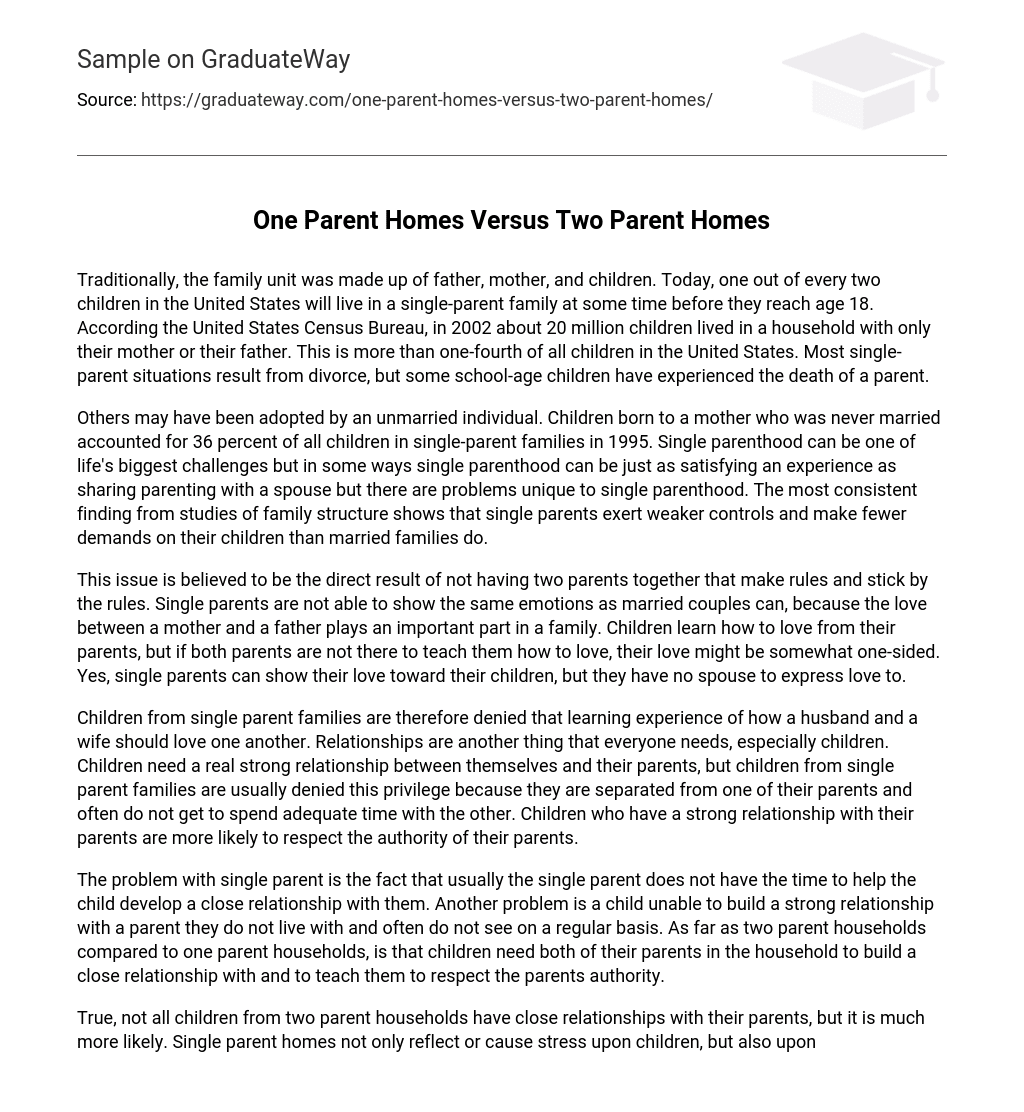Traditionally, the family unit was made up of father, mother, and children. Today, one out of every two children in the United States will live in a single-parent family at some time before they reach age 18. According the United States Census Bureau, in 2002 about 20 million children lived in a household with only their mother or their father. This is more than one-fourth of all children in the United States. Most single-parent situations result from divorce, but some school-age children have experienced the death of a parent.
Others may have been adopted by an unmarried individual. Children born to a mother who was never married accounted for 36 percent of all children in single-parent families in 1995. Single parenthood can be one of life’s biggest challenges but in some ways single parenthood can be just as satisfying an experience as sharing parenting with a spouse but there are problems unique to single parenthood. The most consistent finding from studies of family structure shows that single parents exert weaker controls and make fewer demands on their children than married families do.
This issue is believed to be the direct result of not having two parents together that make rules and stick by the rules. Single parents are not able to show the same emotions as married couples can, because the love between a mother and a father plays an important part in a family. Children learn how to love from their parents, but if both parents are not there to teach them how to love, their love might be somewhat one-sided. Yes, single parents can show their love toward their children, but they have no spouse to express love to.
Children from single parent families are therefore denied that learning experience of how a husband and a wife should love one another. Relationships are another thing that everyone needs, especially children. Children need a real strong relationship between themselves and their parents, but children from single parent families are usually denied this privilege because they are separated from one of their parents and often do not get to spend adequate time with the other. Children who have a strong relationship with their parents are more likely to respect the authority of their parents.
The problem with single parent is the fact that usually the single parent does not have the time to help the child develop a close relationship with them. Another problem is a child unable to build a strong relationship with a parent they do not live with and often do not see on a regular basis. As far as two parent households compared to one parent households, is that children need both of their parents in the household to build a close relationship with and to teach them to respect the parents authority.
True, not all children from two parent households have close relationships with their parents, but it is much more likely. Single parent homes not only reflect or cause stress upon children, but also upon the parent. Single parents especially feel stress when a father or mother figure is not present. Single parents often report that they always worried about money. Not only was money a big issue, but also time and energy.
Single parents are put under pressure from about every aspect of their lives, and without a spouse there to help raise a family, pay the bills, and to show them love, the single mother must nearly feel hopeless. In closing, a family unit consists of a father and a mother with their children, not just one parent. Single parent homes create a lot of stress and worries on the parent as well as the children, and the stress and worries are not needed by either. After all, it takes two to make a child, it should take two to raise a child.
References:
www.healthychildren.org
http://www.healthofchildren.com/S/Single-Parent-Families.html





